
Figure 1. Pompeii at the Grand Palais 2020, exhibition poster
Review by Beverly HELD Ph.D
I asked Erin if she wanted to see the Pompeii show at the Grand Palais with me. She said no, she had seen a big Pompeii show a few years ago in Chicago (I googled it, it was 2005) and she couldn’t imagine that there was anything more to learn about Pompeii. So dear readers, I went alone, even though, one time, when I was in Pompeii, a marble tesserae got stuck in the bottom of my sandal and I did not discover it until that evening, which I suppose makes me part of the problem, people walking off with bits and bobs of the site. There, I’ve confessed and I am feeling a bit better.
As it turns out, a lot has happened at Pompeii in the past 15 years. For one, recent excavations establish that the date of the eruption of Mt Vesuvius wasn’t 24 August but 24 October. The year hasn’t changed, it is still 79 CE (Common Era) which historians now prefer to BC and AD - [Before Christ and Anno Domini] because Christ is not everybody’s lord and BCE and CE are religion neutral. During the most recent excavations under the direction of the dreamy new director, Massimo Ossano, buildings and frescoes and statues have been discovered. And new stuff will be discovered in the future since one third of the site is still buried under rocks and ash.
The most significant aspect about the excavations of Pompei for me is that since it is so large, no one was able to restore it at any one go. And over the years, ideas about archeology have changed and techniques have improved. Take for example the new date for the eruption of Mt Vesuvius. Simple, recently archeologists found graffiti on a wall with a date of 17 October. (Figure 2) This later dating also explains why dried fruits were found rather than fresh ones and why people were wearing clothes appropriate for a cool day in October, rather than a sweltering one in August.
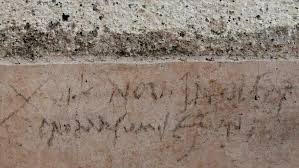
Figure 2. Graffiti recently discovered at Pompeii, dated 17 October 79
Until now, the excavations at Pompeii have mostly been a mess. And what I like about the mess that was Pompeii is that it is not about anyone’s ego. It is about neglect, greed and incompetence; disasters both natural and man-made. But it is not about ego. What do I mean by ego ? Well, take for example, the 19th century businessman. Heinrich Schliemann who was certain that the events and places Homer described in the Iliad were real and he set out to prove it. A man in a hurry, he saw no need for trowels and brushes. No, he bought dynamite for the job and in the process of blasting through nine layers of archeological remains, he destroyed more artifacts than he discovered, including those of ancient Troy.
Schliemann obliterated, his contemporary, Sir Arthur Evans, who excavated the Minoan Palace of Knossos on Crete, invented. But it was his dime and he got what he wanted, his personal vision of the Minoans. Luckily for us, archeologists had another opportunity to study Minoan civilization when the Palace of Akrotiri, on the island of Santorini was discovered. I’ll mention one fresco motif found at both palaces so you get the idea. At Knossos, without evidence, squiggly blue lines were interpreted as bodies of water and ‘restored’ as such. At Akrotiri, with study and patience, those squiggly blue lines were identified as the tails of blue monkeys from Africa. More recently, primatologists have examined those lines again and now believe that they are actually Hanuman langurs, a species from the Indian subcontinent. So now we have evidence that the Minoans had much larger trade routes than previously imagined. And don’t get me started with France’s own Eugene Viollet-le-Duc whose restorations or interpretations, a la Evans, gave us the now destroyed spire of Notre Dame Cathedral.
We all know the Pompeii story, but herewith a brief recap to refresh your memory. In 79, people living in Pompeii knew that Mt Vesuvius was an active volcano, it still is. it had erupted before and people were used to it. I get that, I have a home in San Francisco and minor earthquakes are commonplace. You don’t get too rattled when the earth starts to shake. Scientists know (although people living in Pompeii wouldn’t have), that some of the eruptions before 79 were even stronger than the one that destroyed their town. There have been eruptions since 79, most recently between 1913 - 1944. And ironically, in 79, people had just finished restoring their homes and public buildings after a major earthquake had severely damaged them in 62.
We have a fairly detailed idea of what happened in Pompeii on October 24. At about 1:00 p.m., ash began to fall. An hour later, white pumice started falling and accumulating. Just as an aside, I bought a pumice stone at Pompei, it is great for keeping your feet smooth, I don’t know how old it was though. By 5:00 p.m roofs began to collapse from the accumulated weight of the pumice and ash, which would eventually measure 27 feet in height. Then rocks the size of tennis balls started falling. At midnight, the eruption spewed a column more than 20 miles high (33 km). (Figure 3) Archeological evidence shows that during the next seven hours, six surges made up of molten gas and rock fragments were ejected from the volcano. It was the heat of those surges that would have killed anyone who had not yet escaped. According to one volcanologist, the surges would have raised the temperature to 570 degrees F (300 C). So if it is any comfort, the contorted corpses that you see where they fell at Pompeii, did not die a prolonged death of suffocation, they burned up in a fraction of a second. By 7:00 a.m. October 25, Pompeii was no more. Pliny the Younger was there. He wrote an account of the disaster a few years later. Alas, quite a bit of what he wrote cannot be corroborated by archeological evidence. So much for famous first hand accounts.
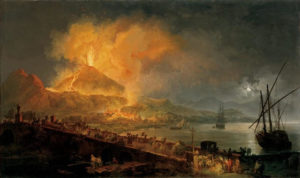
Figure 3. Eruption of Mt Vesuvius, Pierre-Jacques Voltaire, 1777
While the survivors of the eruption must have returned to see if they could find any of their possessions, it was useless, everything was buried under a mountain of ash and rocks. And then people forgot about Pompeii, forgot about where it had been located. Then in 1592, the architect Domenico Fontana apparently bumped into Pompeii when he was digging an underground aqueduct in a little town near Naples. He uncovered a few walls with inscriptions on them. But Fontana didn’t discuss his discoveries. Any architect who has worked in Athens or Rome or Jerusalem or anywhere else inhabited for millennia, will recognize the problem. There is the likelihood that in digging down to build up, you will run into the remains of previous civilizations. Fontana kept quiet and kept digging. Contemporary architects are not so lucky, projects can be delayed for years or abandoned altogether while archeologists examine a site and everyone else discusses its historical significance.
Another 150 years elapsed before Pompeii was rediscovered and excavations began under the direction of a military engineer working for the king of Naples. His discoveries, from 1748-1763, had an enormous impact on the art and design of the time. Frescoes, too fragile to survive when exposed to the air, were intact and colorful when they were unearthed at Pompeii. Classical statues still had flecks of paint on them. (Figure 4) People were surprised by the painted statues and shocked by the erotic frescoes and mosaics (Figure 5, Figure 6). Influenced by Pompeii, the Scottish architect Robert Adam created gorgeous rooms for the elegant residences of his wealthy English patrons. (Figure 7) Dressmakers created high-waisted columnar chemise dresses, lots of cleavage was displayed but as the dresses were virtually transparent anyhow, it didn’t much matter. (Figure 8)
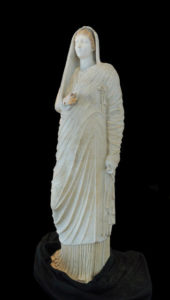
Figure 4. Statue of Livia found in Pompeii (notice color on hair, hand & hem)
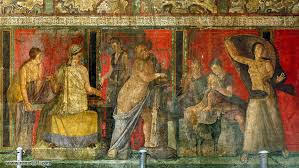
Figure 5. Bacchic Initiation at Villa of the Mysteries, Pompeii
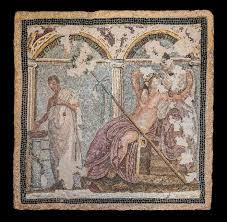
Figure 6. Bacchus and Ariadne mosaic, Pompeii
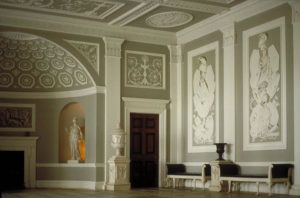
Figure 7. Osterley Park, Isleworth, England, 1767-68
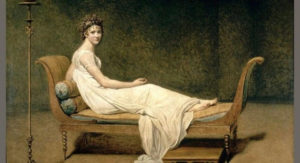
Figure 8. Mme Racamier, Jacques Louis David, 1800
Another century went by before excavations started again, this time under the direction of an archaeologist, Giuseppe Fiorelli, who determined that the occasional voids in the ash layer with human remains were the spaces left by the decomposed bodies. He devised a technique of injecting plaster into them to recreate the forms of Vesuvius's victims. This technique is still used today, with clear resin instead of plaster which is more durable and doesn’t destroy the bones. (Figure 9) When people write about the disaster that was Pompeii, they often say that everybody died. But probably only 2000 of the 20,000 inhabitants died. The majority of the population had enough time to leave before it was too late and they left.
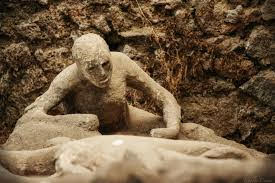
Figure 9. Fleeing corpse, Pompeii
Since the 19th century, Pompeii has experienced four major earthquakes and endless man-made disasters, from allied bombings in 1943 to shoddy peacetime “restorations” by building firms controlled by organized crime. In 2010 the famous “House of the Gladiators” toppled over (Figure 10). By then, only about 10% of the site’s 110 excavated acres were accessible to visiting tourists. It doesn’t stop there, a raid on a warehouse in Geneva, Switzerland, a few years ago recovered fragments of Pompeii frescoes, probably stolen decades ago.

Figure 10. House of the Gladiators, Pompeii
Now there is a new Superintendent of Excavations overseeing the site, Professor of Archeology, Massimo Osanna who told an interviewer when he took over, that the site was in such a state of disrepair that only a total reorganization would save it. Osanna’s goal is to transform a ‘chronic disaster into a peerless showcase,’ to make Pompeii a ‘state-of-the-art laboratory for global archaeology,’ His team is huge and interdisciplinary. There is the usual cast of characters, architects and archaeologists, as well as bricklayers, electricians, plumbers, painters, carpenters, photographers, dentists, radiologists, biologists, geologists, mapping technicians, computer scientists, art restorers as well as medical engineers and hydro-engineers.
Since taking charge, Osanna’s team has not only changed the date of Pompeii’s last day, but using lists of family names, they have established that many of Pompeii’s inhabitants were ‘liberati,’ former slaves and their offspring who were from all the places that Rome had conquered. And that brings us to the exhibition. And while I realize that exhibitions can’t be all things to all people, I thought a little more contextualization was in order concerning slavery in Pompeii in the year 79. At one point, we are told that even the most modest households had 3 or 4 slaves. We also learn that among the 2000 corpses found at Pompeii, some were together in a small room, shackled. Chained in their hovel, forgotten, when their masters escaped. How long would it have taken to free them from those shackles, to give them a chance to flee, too ? And what about those liberati, the former slaves. How did they achieve manumission (freedom). Were they permitted to own property, including slaves? And with that list of former slaves from many different countries, I found it cringe worthy that the one recreated scene in the exhibition which includes a slave, shows a black man, bowing or cowering, hard to tell which. If you want to learn more, as I did, take a look at: Joshel, S., & Petersen, L. (2014). The Material Life of Roman Slaves. Cambridge: Cambridge University Press.
So with that out of the way, I will tell you about the exhibition, which was informative as well as fun. The publicity about the exhibition promised that it will be immersive while the director of the excavation, assured us that it wouldn’t be a Disneyland.The entire exhibition is in one room, albeit a grand room, the Salon d’Honneur in the Grand Palais. This exhibition presents two moments in Pompeii history. The present, our present, includes videos of people working on site, we see them excavating pottery and restoring frescoes. Then we are in Pompeii, circa 79. Life size recreations of rooms give the sense that you are strolling down a Pompeii street. (Figure 11) And shadows of people walking along, from the year 79, replete with sound effects like horses’ clomping along, mingle with the shadows of museum goers, disconcerting but interesting. (Figure 12, Figure 13) There are displays of objects that have recently been recovered.(Figure 14) A short film traces the events of that day in October and in a discrete alcove you can see examples of how the bodies were found at Pompeii. But I will have to admit the biggest draw was the eruption of Mt. Vesuvius every 15 minutes. (Figure 15) People would stop what they were doing and rush to the central space to watch the eruption begin and then flinch when the black dust cloud whizzed by overhead. We weren’t the only ones who were affected like that, a promotional video of the exhibition shows the dreamy Dr. Ossama wandering around the exhibition. He ducks too, when the eruption bursts forth. The exhibition was immersive and educational, but the Disneyland aspect was not without its merits, indeed it was very convincing! (Figure 16)

Figure 11. Pompeii Street, Grand Palais recreation, Paris 2020
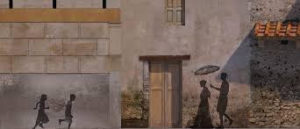
Figure 12. Shadows of people in Pompeii, 79 CE (Grand Palais recreation)
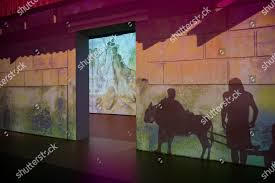
Figure 13. Shadows of people and horse in Pompeii, 79, CE (Grand Palais recreation)
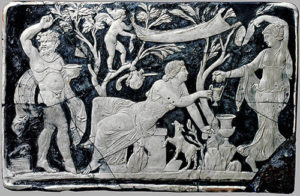
Figure 14. Bacchus and Ariadne, Pompeii
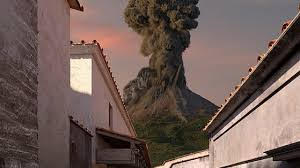
Figure 15. Eruption of Mt Vesuvius, (Grand Palais recreation), Paris
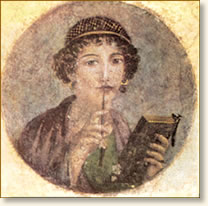

2 comments
Maribeth Flynn August 25, 2020
There’s a great YouTube video that recreates the day of the eruption hour by hour - it still has the August date. A Day in Pompeii by Zero One. I assign it to my art history survey classes and it always makes an impression.
Julia Frey August 28, 2020
Fascinating article. Makes me eager to see the exhibition (even with social distancing) and less disappointed that we had to cancel a planned trip to Pompeii so I could see it at last. But it looks as if in years to come it will be even more interesting.